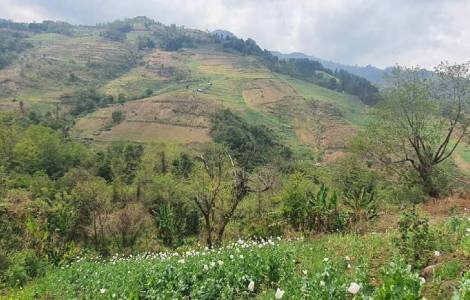
UNODC
Yangon (Agenzia Fides) - The annual report of the United Nations Office on Drugs and Crime (UNODC) has revealed that Myanmar's opium production has surpassed that of Afghanistan during 2023. The document, titled 'Southeast Asia Opium Survey 2023 Cultivation, Production, and Implications', shows a 36% increase in opium production in Myanmar, taking the figure from 790 to 1,080 tons between 2022 and 2023. The news comes when in Afghanistan, after the ban on the cultivation of opiates imposed by the Taliban in 2022, production has been drastically reduced, falling by 95% to "only" 330 tons. The area cultivated with the plant, the main source of opium, has decreased from 233,000 hectares in 2022 to only 11,000 hectares in 2023. Although opium cultivation in Myanmar is still considered artisanal and linked to a subsistence economy, the UNOCD report highlights that "such cultivation in Myanmar continues to flourish, becoming more sophisticated and productive, resulting in the highest estimated opium production since 2001", the report states. Opium cultivation is changing, moving from small-scale and poorly organized plantations to increasingly sophisticated ones, characterized by a greater density of plots, better organization of plantations and the use of irrigation and fertilizer systems. Despite the increase in production, the cost of Burmese opium has not decreased, but rather increased. A factor that the UNODC attributes to the country's political instability, which has meant that the cost of ensuring the supply chain, from cultivation to transportation, must be included in the price of drugs. It is no coincidence that opium production is concentrated in the states of the federation that have been fighting for decades for their independence or to achieve strong autonomy from the central State. Almost 90% of the 41,300 hectares dedicated to opium cultivation are located in Shan State (northern), the northern part of which has been shaken by fighting in recent weeks, after an armed alliance of ethnic minorities launched an offensive against the military junta. Is this then a return to the past, when most of the opium that was transformed into heroin was produced in the so-called Golden Triangle (the then Burma, Laos and Thailand), later replaced by the Golden Crescent (Afghanistan, Pakistan and Iran)? It is difficult to give an answer also because the international drug market has evolved and is now dominated by synthetic drugs. It is no coincidence that the Golden Triangle, once it lost its supremacy in opium/heroin production, became a major producer of methamphetamine. "The drug economy in the region is not only determined by opioids," recalls the UNODC report. "It is important to understand that opium's economic recovery is occurring at the same time as an increase in synthetic drug production in Myanmar," the report says, "as demonstrated by record levels of seizures in the region, especially of methamphetamine and ketamine". (L.M.) (Agenzia Fides, 12/12/2023)